Spatial and Temporal Variations of Polar Ionospheric Total Electron Content over Nearly Thirteen Years
Abstract
1. Introduction
2. Materials and Methods
2.1. Data Source
2.2. Deriving TEC from GPS Measurements
3. Mapping Performances of the Four Models over the Arctic and Antarctic
3.1. Establishment of Four Ionospheric TEC Models
3.2. Evaluation of the Four Ionosphere TEC Models
4. Spatial and Temporal Variation Characteristics of TEC in the Polar Regions
4.1. Spatial Distribution Characteristics of Ionosphere TEC in the Polar Regions
4.2. Temporal Variation Characteristics of Ionosphere TEC in the Polar Regions
4.3. Case Study of Tracking Ionization Patches
5. Conclusions
Author Contributions
Funding
Acknowledgments
Conflicts of Interest
References
- Davies, K.; Hartmann, G.K. Studying the ionosphere with the Global Positioning System. Radio Sci. 1997, 32, 1695–1703. [Google Scholar] [CrossRef]
- Mannucci, A.J.; Iijima, B.A.; Lindqwister, U.J.; Pi, X.; Sparks, L.; Wilson, B.D. GPS and Ionosphere. In URSI Reviews of Radio Science; Jet Propulsion Laboratory: Pasadena, CA, USA, 1999. [Google Scholar]
- Schaer, S. Mapping and Predicting the Earth’s Ionosphere Using the Global Positioning System. Ph.D. Thesis, University of Bern, Bern, Switzerland, 1999. [Google Scholar]
- Di Giovanni, G.; Radicella, S. An analytical model of the electron density profile in the ionosphere. Adv. Space Res. 1990, 10, 27–30. [Google Scholar] [CrossRef]
- García-Rigo, A.; Monte, E.; Hernández-Pajares, M.; Juan, J.; Sanz, J.; Aragón-Angel, A.; Salazar, D. Global prediction of the vertical total electron content of the ionosphere based on GPS data. Radio Sci. 2011, 46, RS0D25. [Google Scholar] [CrossRef]
- Klobuchar, J.A. Ionospheric time-delay algorithm for single-frequency GPS users. IEEE Trans. Aerosp. Electron. Syst. 1987, 23, 325–331. [Google Scholar] [CrossRef]
- Jiang, H.; Liu, J.; Wang, Z.; An, J.; Ou, J.; Liu, S.; Wang, N. Assessment of spatial and temporal TEC variations derived from ionospheric models over the polar regions. J. Geod. 2019, 93, 455–471. [Google Scholar] [CrossRef]
- Hernández-Pajares, M.; Juan, J.M.; Sanz, J.; Aragón-Àngel, À.; García-Rigo, A.; Salazar, D.; Escudero, M. The ionosphere: Effects, GPS modeling and the benefits for space geodetic techniques. J. Geod. 2011, 85, 887–907. [Google Scholar] [CrossRef]
- Mitchell, C.N.; Alfonsi, L.; Franceschi, G.D.; Lester, M.; Romano, V.; Wernik, A.W. GPS TEC and scintillation measurements from the polar ionosphere during the October 2003 storm. Geophys. Res. Lett. 2005, 32, 302–317. [Google Scholar] [CrossRef]
- Yang, H.; Yang, X.; Zhang, Z.; Zhao, K. High-Precision Ionosphere Monitoring Using Continuous Measurements from BDS GEO Satellites. Sensors 2018, 18, 714. [Google Scholar] [CrossRef]
- Yuan, Y.; Ou, J. A generalized trigonometric series function model for determining ionospheric delay. Prog. Nat. Sci. 2004, 14, 1010–1014. [Google Scholar] [CrossRef]
- Liu, J.; Chen, R.; An, J.; Wang, Z.; Hyyppa, J. Spherical cap harmonic analysis of the Arctic ionospheric TEC for one solar cycle. J. Geophys. Res. Space Phys. 2014, 119, 601–619. [Google Scholar] [CrossRef]
- Liu, J.; Chen, R.; Wang, Z.; Zhang, H. Spherical cap harmonic model for mapping and predicting regional TEC. GPS Solut. 2011, 15, 109–119. [Google Scholar] [CrossRef]
- Komjathy, A. Global Ionospheric Total Electron Content Mapping Using the Global Positioning System. Ph.D. Thesis, University of New Brunswick, Fredericton, NB, Canada, 1997. [Google Scholar]
- Zhang, Z.; Pan, S.; Gao, C.; Zhao, T.; Gao, W. Support Vector Machine for Regional Ionospheric Delay Modeling. Sensors 2019, 19, 2947. [Google Scholar] [CrossRef] [PubMed]
- An, J.; Wang, Z.; Ning, X. GPS-based regional ionospheric models and their suitability in Antarctica. Adv. Polar Sci. 2014, 25, 32–37. [Google Scholar]
- Ma, T.Z.; Schunk, R.W. Effect of polar cap patches on the thermosphere for different solar activity levels. J. Atmos. Sol. Terr. Phys. 1997, 59, 1823–1829. [Google Scholar] [CrossRef]
- Weber, E.J.; Kelly, M.C.; Vallentin, J.O.; Basu, S.; Carlson, H.C.; Fleischman, J.R.; Hardy, D.A.; Maynard, N.C.; Pfaff, R.F.; Rodriguez, P.; et al. Rocket measurements within a polar cap arc: Ionospheric modelling. J. Geophys. Res. 1987, 94, 6692. [Google Scholar] [CrossRef]
- Bust, G.S.; Crowley, G. Tracking of polar cap ionospheric patches using data assimilation. J. Geophys. Res. Space Phys. 2007, 112, A05307. [Google Scholar] [CrossRef]
- Basu, S.; Valladares, C. Global aspects of plasma structures. J. Atmos. Sol. Terr. Phys. 1999, 61, 127–139. [Google Scholar] [CrossRef]
- Buchau, J.; Weber, E.J.; Anderson, D.N.; Carlson, H.C., Jr.; Moore, J.G.; Reinisch, B.W.; Livingston, R.C. Ionospheric structures in the polar cap—Their origin and relation to 250-MHz scintillation. Radio Sci. 1985, 20, 325–338. [Google Scholar] [CrossRef]
- Coley, W.R.; Heelis, R.A. Seasonal and universal time distribution of patches in the northern and southern polar caps. J. Geophys. Res. 1998, 103, 29229–29237. [Google Scholar] [CrossRef]
- Horvath, I.; Essex, E.A. The Weddell Sea Anomaly observed with the Topex satellite data. J. Atmos. Sol. Terr. Phys. 2003, 65, 693–706. [Google Scholar] [CrossRef]
- Lomidze, L.; Scherliess, L. Analysis of the Physical Mechanisms behind the Weddell Sea Anomaly using a Physics-based Data assimilation Model. In Proceedings of the 2013 US National Committee of URSI National Radio Science Meeting, Boulder, CO, USA, 9–12 January 2013. [Google Scholar]
- Bellchambers, W.H.; Piggott, W.R. Ionospheric Measurements made at Halley Bay. Nature 1958, 182, 1596–1597. [Google Scholar] [CrossRef]
- Horvath, I. A total electron content space weather study of the nighttime Weddell Sea Anomaly of 1996/1997 southern summer with TOPEX/Poseidon radar altimetry. J. Geophys. Res. Space Phys. 2006, 111, 99–103. [Google Scholar] [CrossRef]
- He, M.; Liu, L.; Wan, W.; Ning, B.; Zhao, B.; Jin, W.; Yue, X.; Le, H. A study of the Weddell Sea Anomaly observed by FORMOSAT-3/COSMIC. J. Geophys. Res. Space Phys. 2009, 114, A12309. [Google Scholar] [CrossRef]
- Weber, E.J.; Buchau, J.; Moore, J.G.; Sharber, J.R.; Livingston, R.C. F-Layer Ionization Patches in the Polar Cap. J. Geophys. Res. Space Phys. 1984, 89, 1683–1694. [Google Scholar] [CrossRef]
- Crowley, G.; Ridley, A.J.; Deist, D.; Wing, S.; Knipp, D.J.; Emery, B.A.; Foster, J.; Heelis, R.; Hairston, M.; Reinisch, B.W. Transformation of high-latitude ionospheric F region patches into blobs during the March 21, 1990, storm. J. Geophys. Res. Space Phys. 2000, 105, 5215–5230. [Google Scholar] [CrossRef]
- Zhang, Q.; Zhang, B.; Lockwood, M.; Hu, H.; Moen, J.; Ruohoniemi, J.M.; Thomas, E.G.; Zhang, S.; Yang, H.; Liu, R.; et al. Direct Observations of the Evolution of Polar Cap Ionization Patches. Science 2013, 339, 1597–1600. [Google Scholar] [CrossRef]
- Wu, Y.; Jin, S.G.; Wang, Z.M.; Liu, J.B. Cycle slip detection using multi-frequency GPS carrier phase observations: A simulation study. Adv. Space Res. 2010, 46, 144–149. [Google Scholar] [CrossRef]
- Wang, N.; Yuan, Y.; Li, Z.; Montenbruck, O.; Tan, B. Determination of differential code biases with multi-GNSS observations. J. Geod. 2016, 90, 209–228. [Google Scholar] [CrossRef]
- Jiang, H.; Wang, Z.; An, J.; Liu, J.; Wang, N.; Li, H. Influence of spatial gradients on ionospheric mapping using thin layer models. GPS Solut. 2018, 22, 2. [Google Scholar] [CrossRef]
- Buchau, J.; Reinisch, B.W.; Weber, E.J.; Moore, J.G. Structure and dynamics of the winter polar cap F region. Radio Sci. 1983, 18, 995–1010. [Google Scholar] [CrossRef]

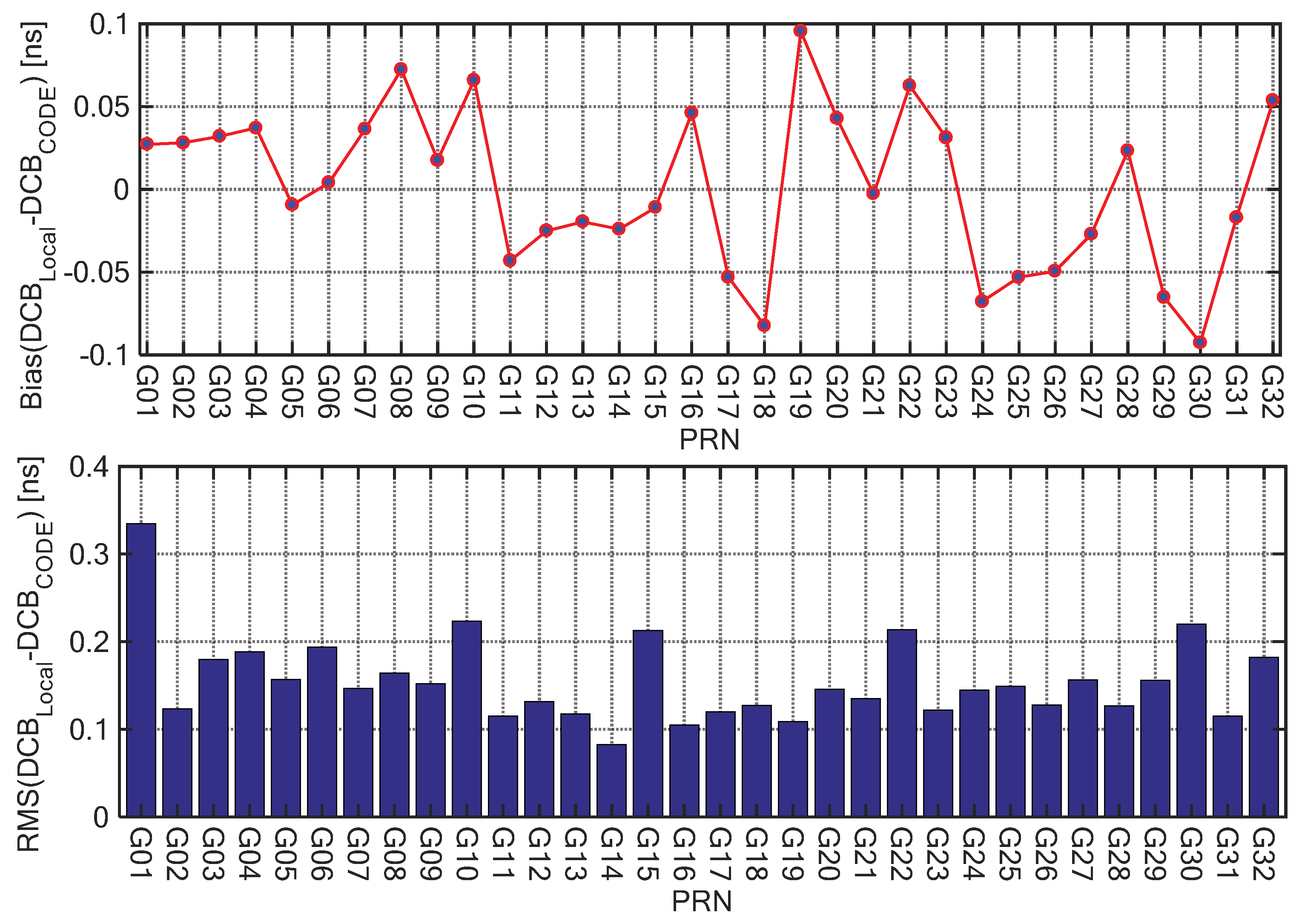
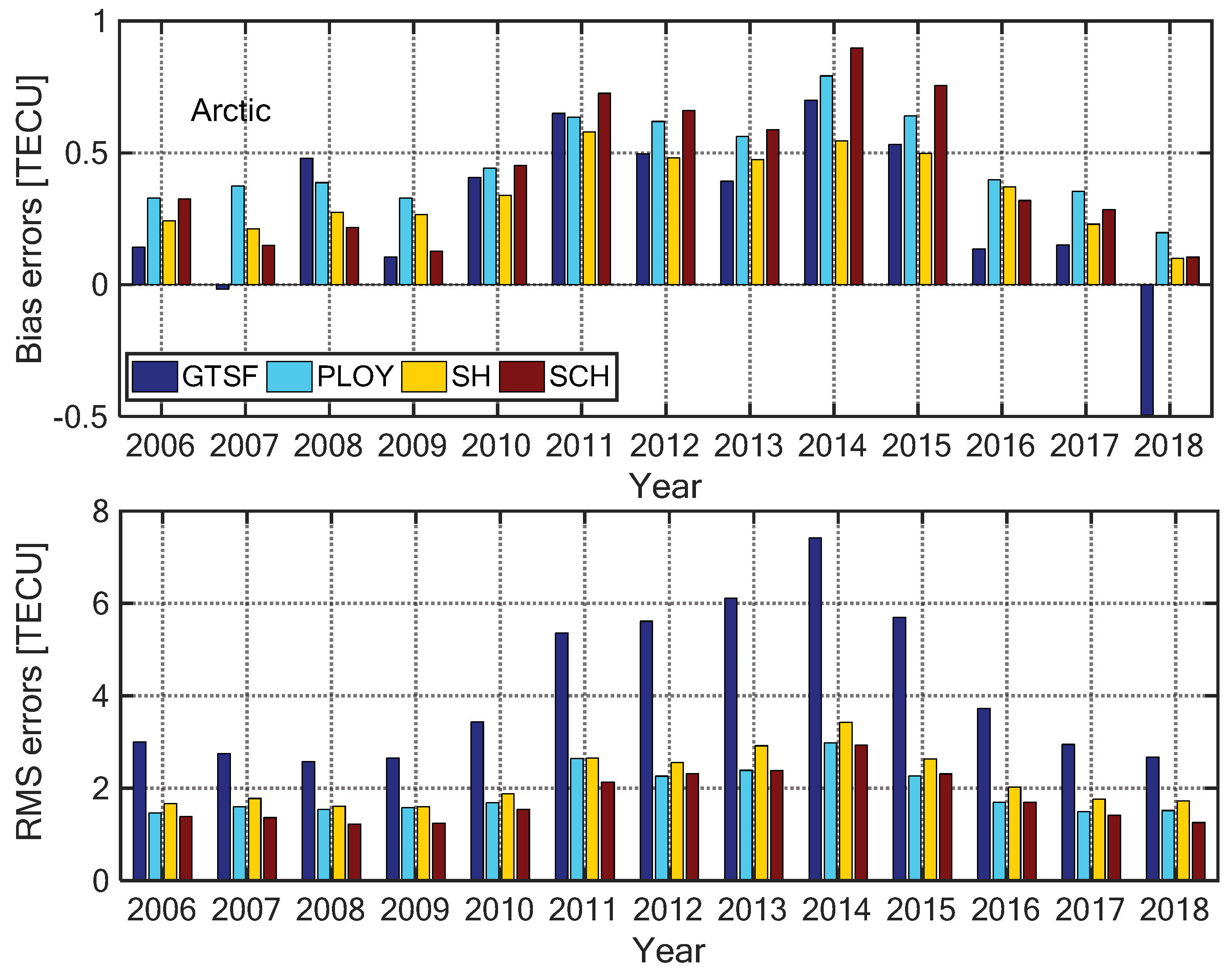
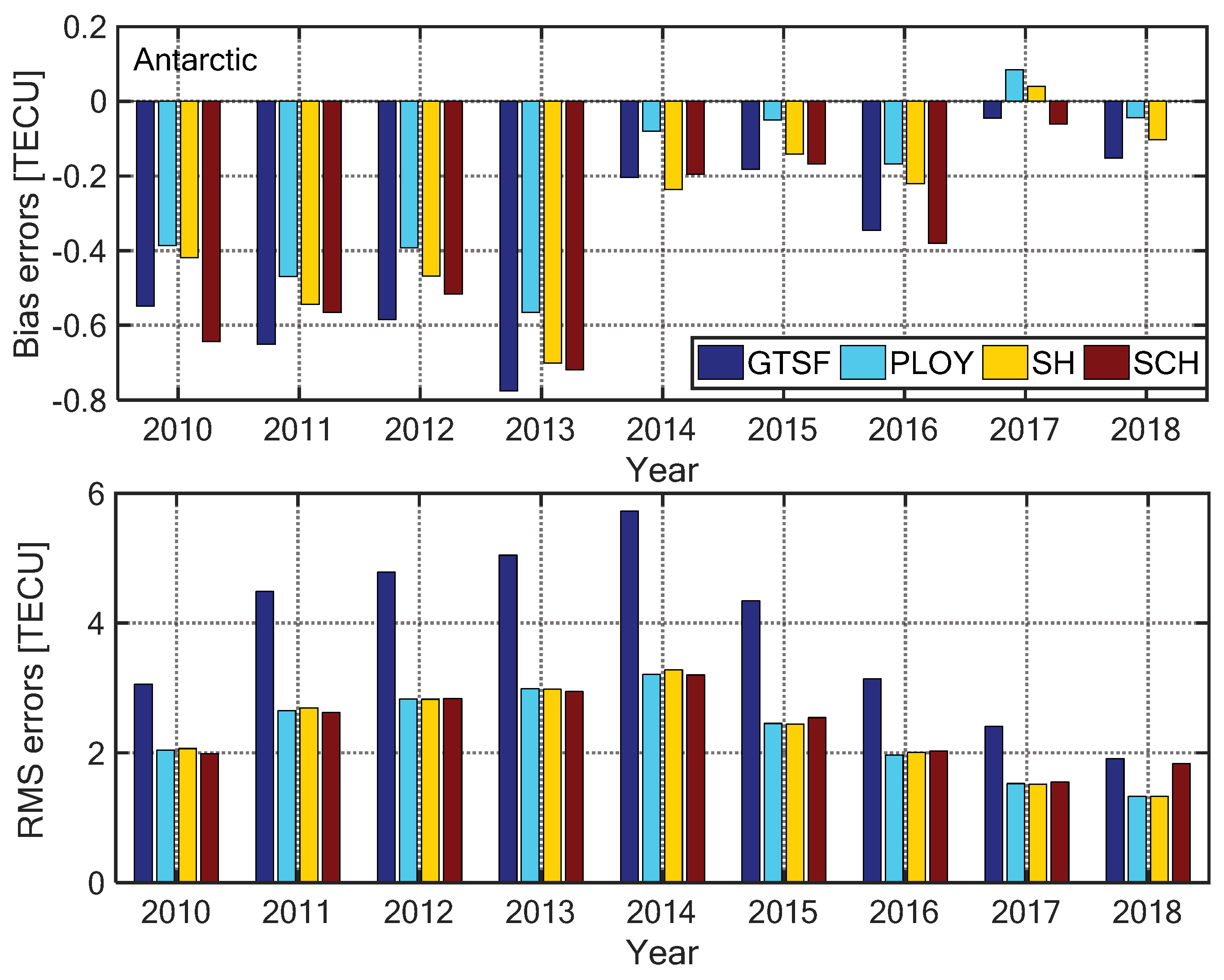
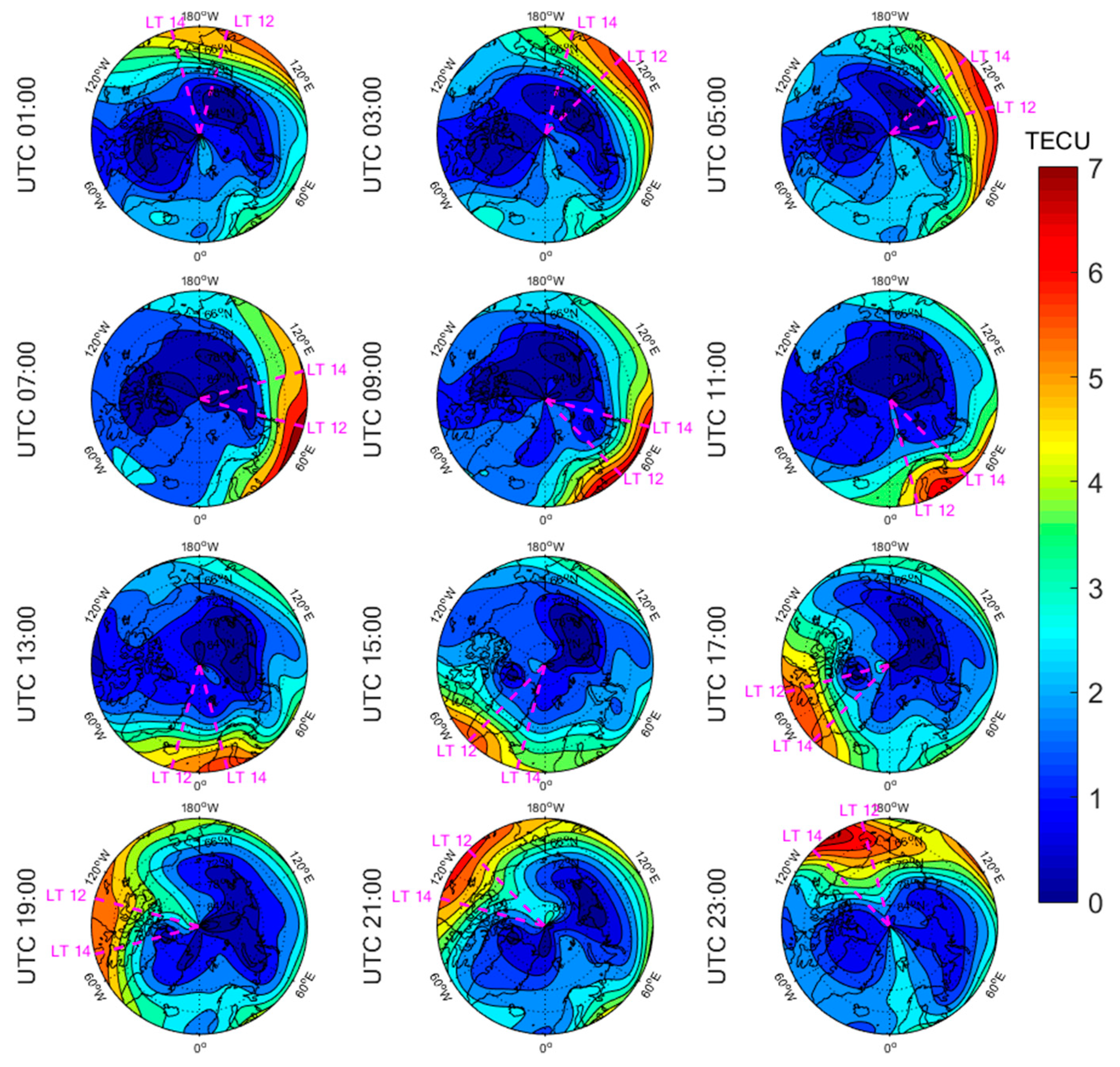


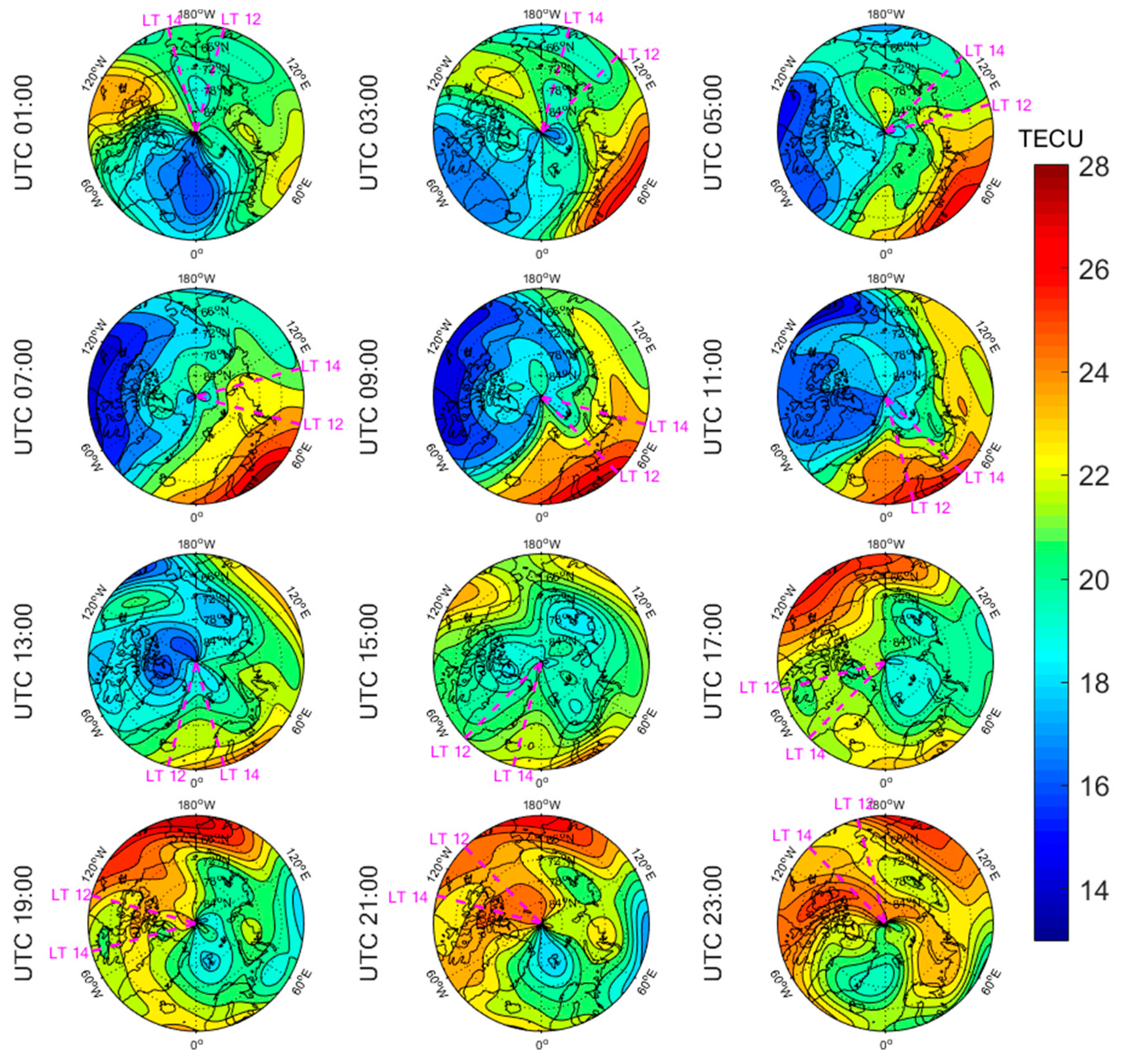

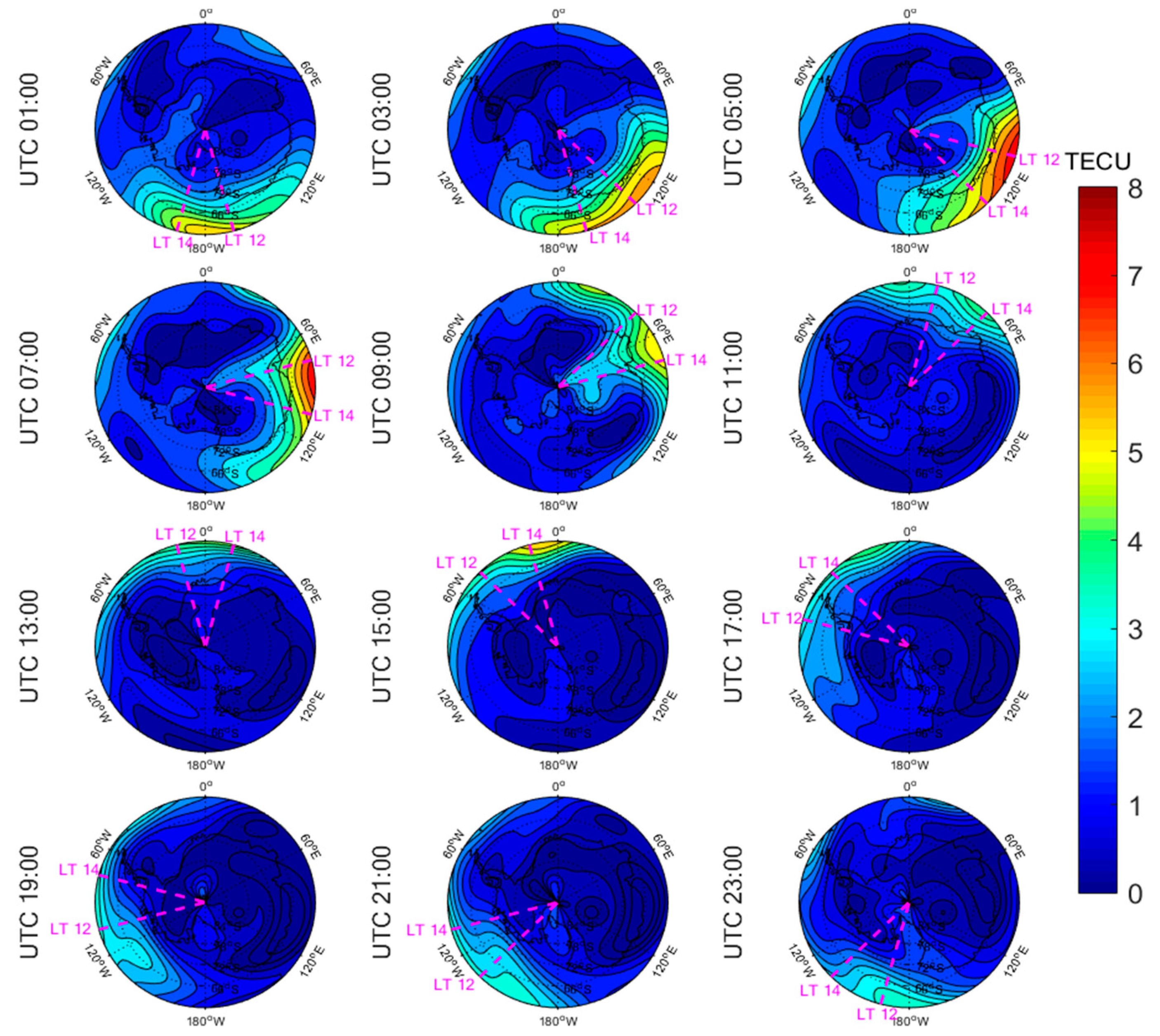

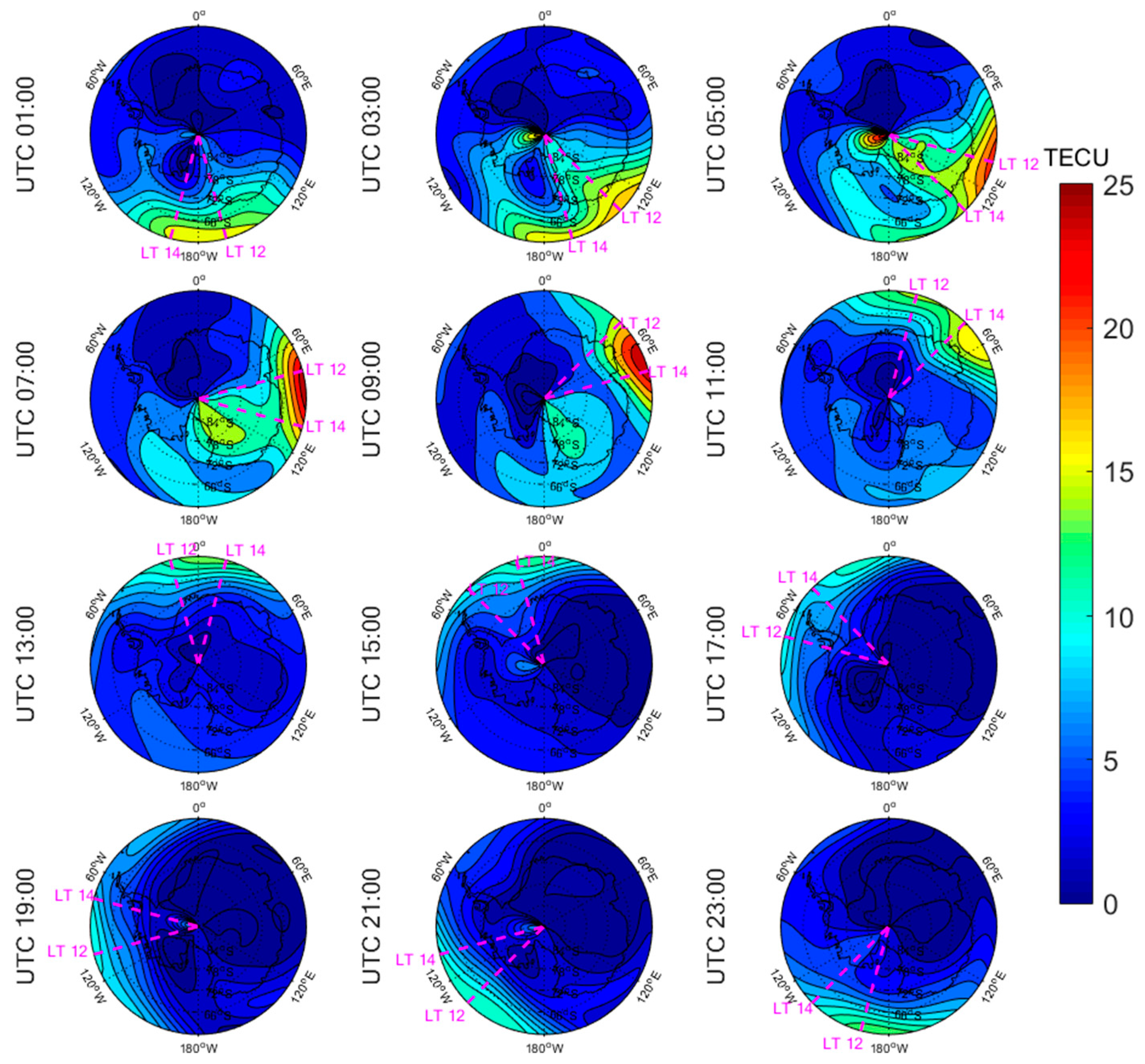
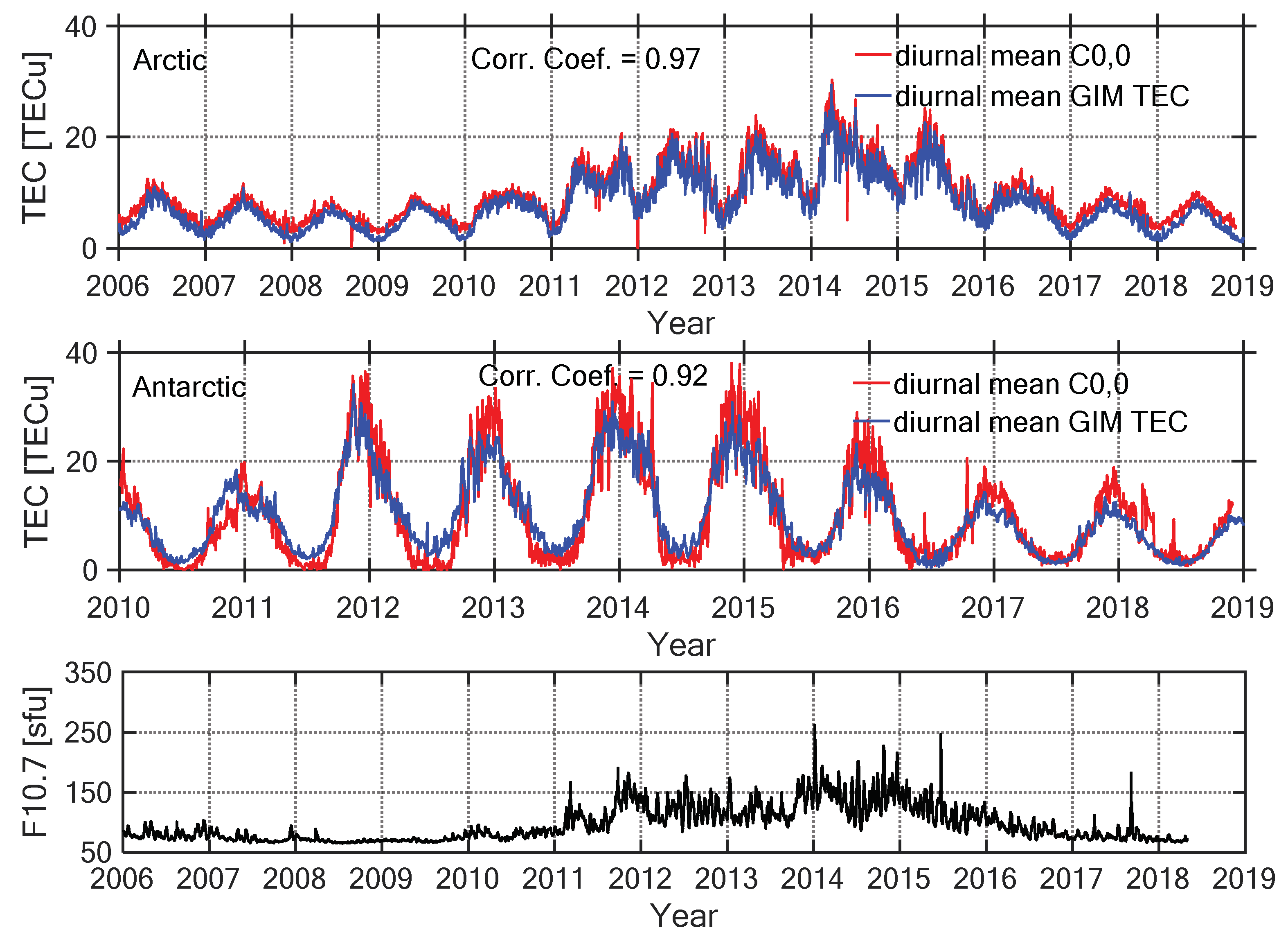
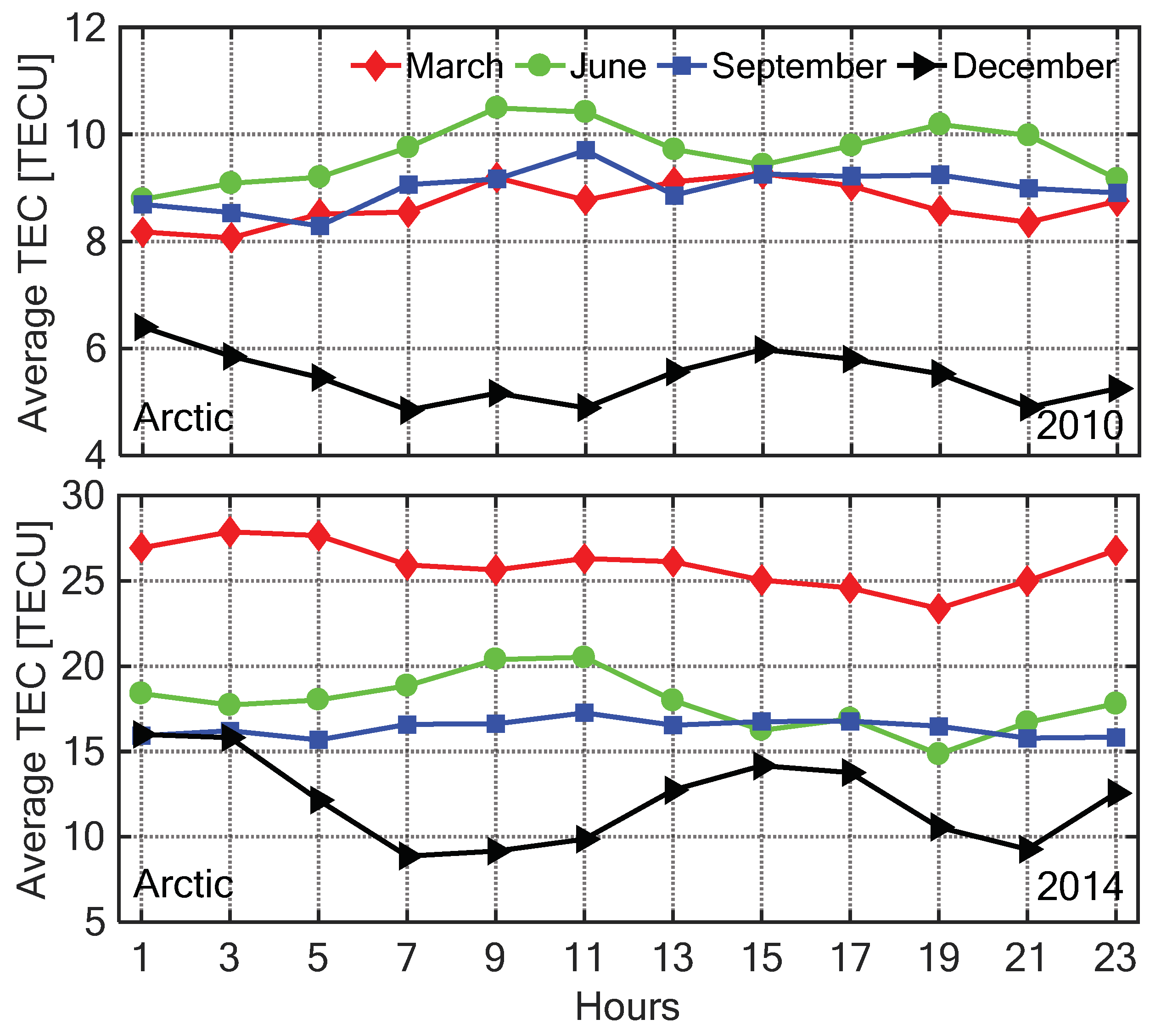

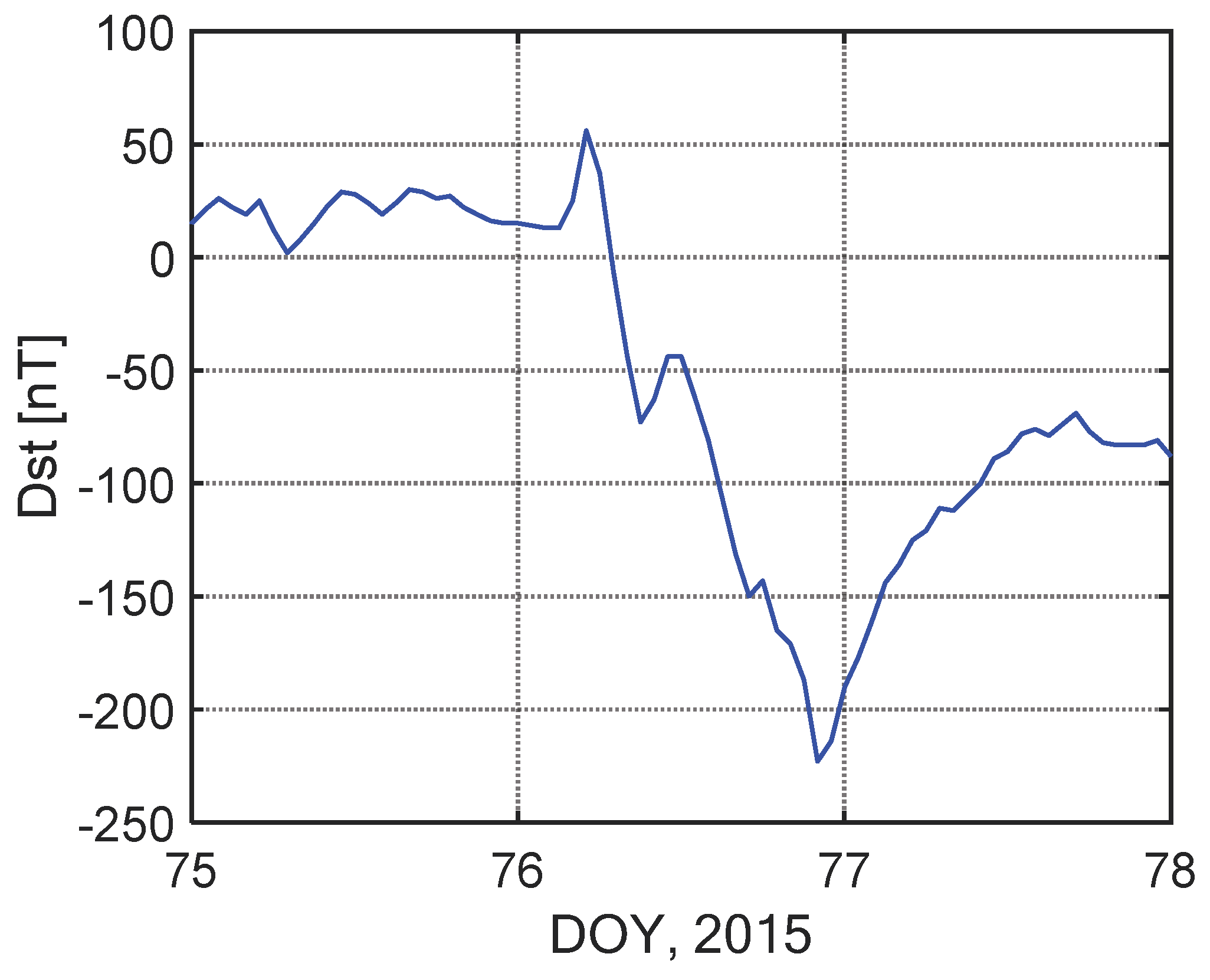
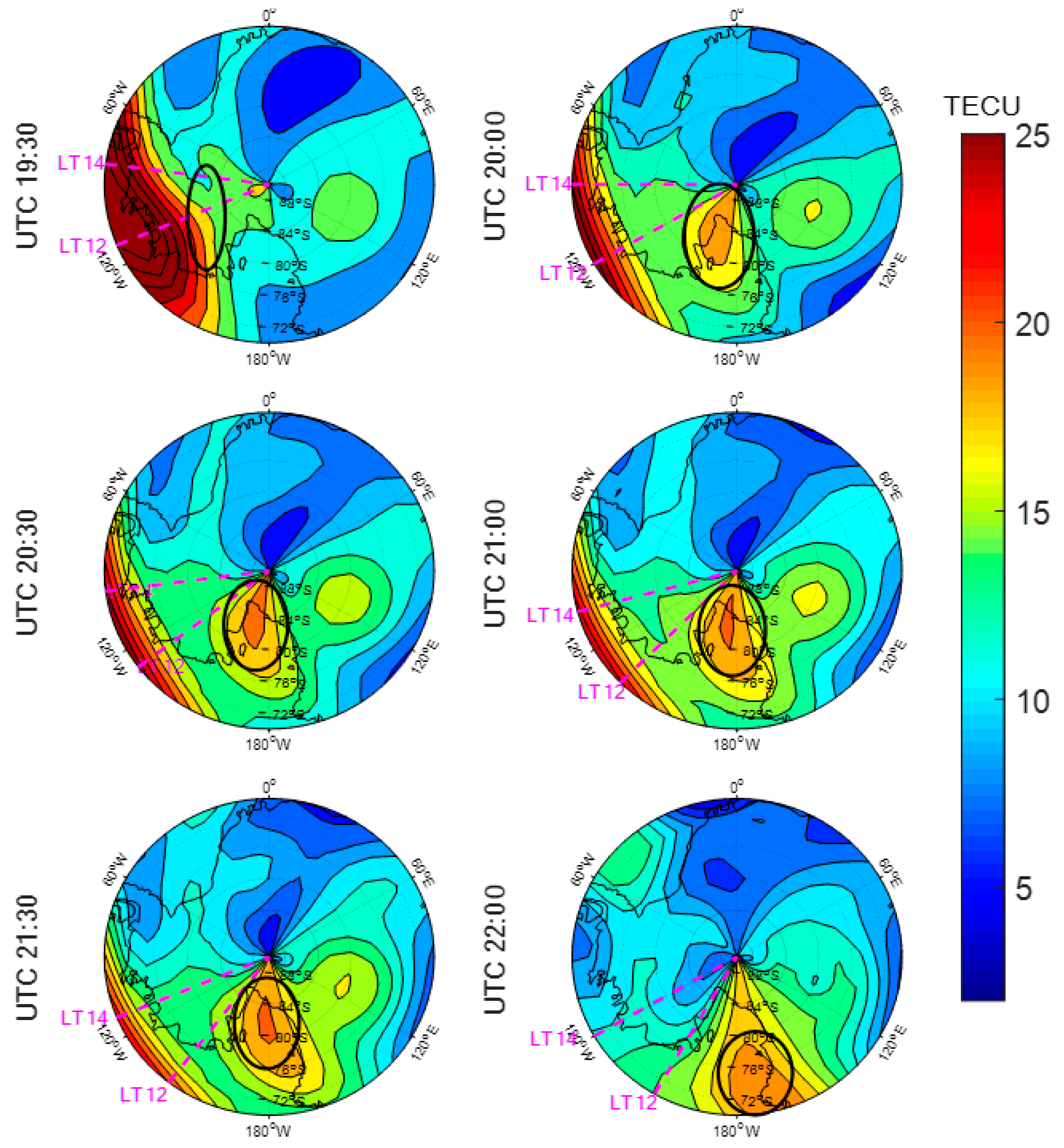
© 2020 by the authors. Licensee MDPI, Basel, Switzerland. This article is an open access article distributed under the terms and conditions of the Creative Commons Attribution (CC BY) license (http://creativecommons.org/licenses/by/4.0/).
Share and Cite
Xi, H.; Jiang, H.; An, J.; Wang, Z.; Xu, X.; Yan, H.; Feng, C. Spatial and Temporal Variations of Polar Ionospheric Total Electron Content over Nearly Thirteen Years. Sensors 2020, 20, 540. https://doi.org/10.3390/s20020540
Xi H, Jiang H, An J, Wang Z, Xu X, Yan H, Feng C. Spatial and Temporal Variations of Polar Ionospheric Total Electron Content over Nearly Thirteen Years. Sensors. 2020; 20(2):540. https://doi.org/10.3390/s20020540
Chicago/Turabian StyleXi, Hui, Hu Jiang, Jiachun An, Zemin Wang, Xueyong Xu, Houxuan Yan, and Can Feng. 2020. "Spatial and Temporal Variations of Polar Ionospheric Total Electron Content over Nearly Thirteen Years" Sensors 20, no. 2: 540. https://doi.org/10.3390/s20020540
APA StyleXi, H., Jiang, H., An, J., Wang, Z., Xu, X., Yan, H., & Feng, C. (2020). Spatial and Temporal Variations of Polar Ionospheric Total Electron Content over Nearly Thirteen Years. Sensors, 20(2), 540. https://doi.org/10.3390/s20020540




